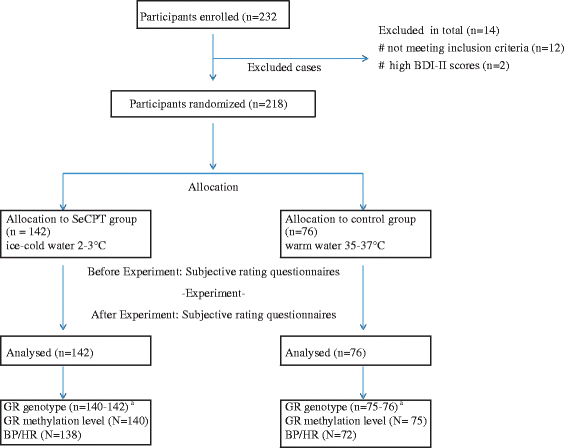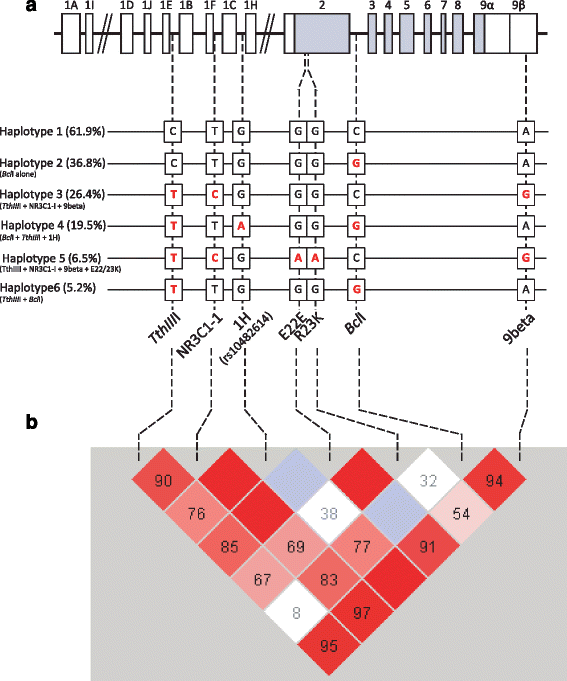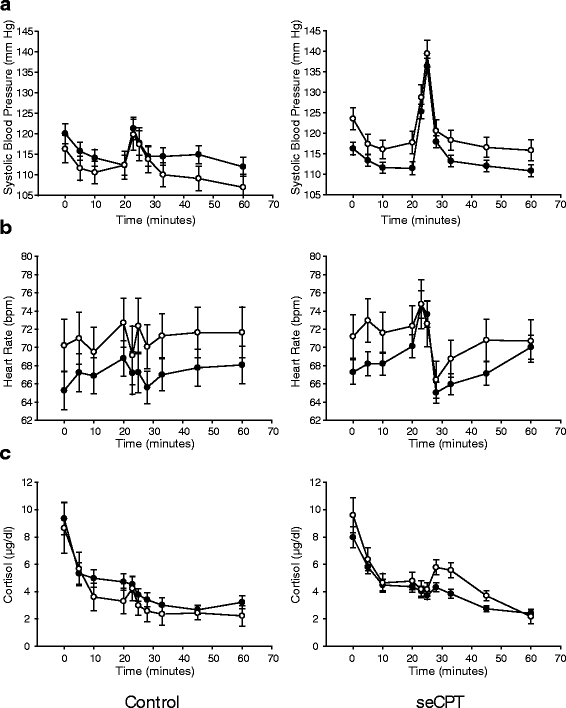The cardiovascular and hypothalamus-pituitary-adrenal axis response to stress is controlled by glucocorticoid receptor sequence variants and promoter methylation
- PMID: 26823689
- PMCID: PMC4730588
- DOI: 10.1186/s13148-016-0180-y
The cardiovascular and hypothalamus-pituitary-adrenal axis response to stress is controlled by glucocorticoid receptor sequence variants and promoter methylation
Abstract
Background: Gender, genetic makeup, and prior experience interact to determine physiological responses to an external perceived stressor. Here, we investigated the contribution of both genetic variants and promoter methylation of the NR3C1 (glucocorticoid receptor) gene to the cardiovascular and hypothalamus-pituitary-adrenal (HPA) axis response to the socially evaluated cold pressor test (seCPT).
Results: Two hundred thirty-two healthy participants were recruited and underwent the experiment. They were randomly assigned to either the seCPT group (cold water) or a control group (warm water). The seCPT group had a clear stress reaction; salivary cortisol levels and peak systolic and diastolic blood pressure all increased significantly compared to the control group. GR genotype (TthIIII, NR3C1-I, 1H, E22E, R23K, BclI and 9beta) and methylation data were obtained from 218 participants. Haplotypes were built from the GR genotypes, and haplotype 2 (minor allele of BclI) carriers had a higher cortisol response to the seCPT in comparison to non-carriers (20.77 ± 13.22; 14.99 ± 8.42; p = 0.034), as well as independently of the experimental manipulation, higher baseline heart rate (72.44 ± 10.99; 68.74 ± 9.79; p = 0.022) and blood pressure (115.81 ± 10.47; 111.61 ± 10.74; p = 0.048). Average methylation levels throughout promoter 1F and 1H were low (2.76 and 1.69 %, respectively), but there was a strong correlation between individual CpGs and the distance separating them (Pearson's correlation r = 0.725, p = 3.03 × 10(-26)). Higher promoter-wide methylation levels were associated with decreased baseline blood pressure, and when incorporated into a linear mixed effect model significantly predicted lower systolic and diastolic blood pressure evolution over time in response to the experimental manipulation. The underlying genotype significantly predicted methylation levels; particularly, the homozygous BclI minor allele was associated with higher methylation in promoter 1H (p = 0.042).
Conclusions: This is one of the first studies linking epigenetic modifications of the GR promoter, receptor genotype and physiological measures of the stress response. At baseline, there were clear genetic and epigenetic effects on blood pressure. The seCPT induced a strong cardiovascular and HPA axis response, and both systems were affected by the functional genetic variants, although methylation also predicted blood pressure reactivity. The return to baseline was predominantly influenced by the genomic sequence. Overall, the physiological response to the seCPT is controlled by an exquisite mix of genetic and epigenetic factors.
Keywords: Alternative promoter; Glucocorticoid receptor; Methylation; Single nucleotide polymorphism.
Figures






References
Publication types
MeSH terms
Substances
LinkOut - more resources
Full Text Sources
Other Literature Sources

